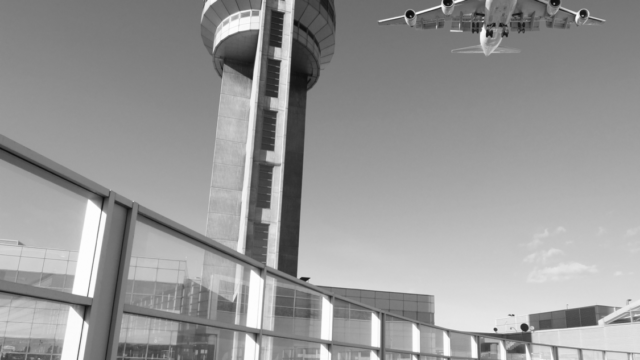
A Myriad of Questions
As we reach the peak of COVID-19’s infection curve through the western world, the unenviable task of rebuilding and resuming operations in a post-pandemic society lies ahead. Airlines will have to find ways to weather the crisis and accommodate a “new normal”. As preparations begin to restore operations, a myriad of questions come to mind for those managing the restart: how can I restore operations at minimal cost, and as quickly as possible? How can I optimize these costs during ramp-up and stay efficient? How can I ensure that I don’t overlook important constraints given multiple layers of complexity? Considering all factors at play, one of the most volatile cost types to consider are workforce costs. demand keeps pace with capacity additions. And if they wait too long, competitors may be quicker and win valuable market shares.
As new (and often differing) information comes from various regulatory agencies and health experts, COVID-19 continues to foster high-variance, volatile, and uncertain effects on aviation traffic demand scenarios. Among the multitude of possibilities are scenarios where further pandemic waves hit airlines, resulting in years to recover to 2020 capacity levels.
Irrespective of these doomsday scenarios, it is important for all participants in the aviation space to accommodate rising demand as soon as it emerges through prompt upscaling of capacities. Maximizing efficiency and minimizing costs need to be as agile as possible to allow the leanest players to sustain competitiveness. Even with these goals, there are numerous potential supply scenarios, all with varying costs, risks, levers, constraints, sourcing degrees, and dependencies to consider and align with stakeholders. Workforce needs may rise or fall as operational procedures change and new standards need to be adopted.
Levers and Constraints when Looking at the Workforce
Only airlines who forecast and manage their costs during the ramp-up phase and beyond in a realistic and smart way, while simultaneously keeping an eye on all operational and regulatory constraints and risks, will be successful. Flexible reactions will prove to be a key component in a successful ramp-up phase.
The ramp-up of an airline’s workforce – whether it be admin, crew, ground or maintenance – will prove to be one of the most complex tasks during every operational re-launch. With the flight and cabin crew being the more complex group to re-start, navigating the plethora of sourcing options during the operational ramp-up will prove to be one of the main differentiators between operators.
To manage the ramp-up phase, department heads are to select the most critical people to be present and assigned to temporary responsibilities and tasks. The crisis calls for different skillsets. This includes planners who are able to create manual pairings just as much as IT staff to quickly implement arisen IT requirements, process owners that find pragmatic solutions to accommodate the new rules as well as crisis managers that bring a high degree of resilience and flexibility.
Who is best suited to prepare the ramp-up?
Therefore, it is important to develop a good strategy before getting the team started. Seeing the ramp-up phase more as a project rather than the “normal” consequently requires an effective set-up of the “project” organization and people who monitor the ramp-up holistically.
Depending on the different forecasts, the best and most cost-efficient scenario to ramp up crew resources may vary significantly. Finding a viable path between prematurely increasing costs’ and ‘being understaffed’ requires the Manpower planning team to improve precision on forecasting costs (fixed and variable), rule constraints, and lead times.
How do I adjust my Manpower Planning assumptions?
The ideal crew activation strategy is certainly unique to each airline and depends on various factors, such as the business model, network, cost structure, union agreements, seniority rules, etc.: for example, it might be better to start activating crews from main hubs before activating regional crews, entailing a higher level of crew re-positioning (to the regional bases), or adapted aircraft rotations during the ramp-up phase. Likewise, it may be favorable to activate certain crew groups first (e.g. crew running out of license or crew qualified for certain airports) to keep recurring training efforts to a minimum.
Process times will need to be verified based on increased security standards such as social distancing and personal protective equipment (PPE). There will also be decreased passenger and onboard service levels to reduce costs and touchpoints (e.g. minimal crew, reduced service on board). Employees will also have increased training requirements to deal with pandemic and other contingency scenarios, including higher sickness rates and knowledge of quarantine regulations and infections.
One of the first tasks in Crew Planning is certainly that pairings need to be built according to the ramp-up strategy – with the biggest challenge being IT to be adapted. Available systems are not configured to build pairings according to new rules and operational procedures. Manual pairing will eventually be the alternative to achieve reduced complexity and reasonable pairings. At the same time, it is essential to have most accurate data, which may require leveraging various systems at the same time.
How will this influence my pairing and rostering as well as training planning?
Inevitably, having crews on reduced hours, furlough and unpaid leave will result in the risk of licenses getting lost. The task is to balance costs against the risk of trainer and Simulator shortages when operations pick up again. Therefore, a reassessment of all training obligations is required, including (but not limited to) accrued training volume (license renewals), additional training requirements driven by new safety policies or service adjustments on board, as well as potential conversion courses needed due to strategic decisions on the future fleet composition. Consider trainer and SIM availabilities and start communicating with your training schools as early as possible to ensure additional slots are available when needed. Optionally external training centers may also be a viable temporary option.
Many airlines have been able to find a solution with their unions or staff representatives for the time of shut down. Now it is the right time to plan further ahead and start discussions on required changes for the cost-efficient ramp-up phase. Negotiate with your union(s) to suspend critical CBA rules (e.g. penalties for duty plan changes) or implement short-term COVID-19 standby concepts as a solution for much more volatile flight schedules, as well as for increased sickness levels and quarantine regulations. This definitively requires flexibility on both sides – and transparency on data and costs will help unions to understand.
How can I further engage with my union and crew members to ensure a successful ramp-up?
In the last weeks we have seen strong commitment and loyalty of the crew members across the airline community. Now it is key to keep this spirit up. Airlines need to stay in close contact with the crew to ensure that staff is engaged when returning to work. This is mainly achieved through a continuous communication about the company’s situation and the decisions being made. Furthermore, guide your crew to achieve maximum security and trust in health standards. The crew needs to feel safe when returning to work and have appropriate training in place to manage passengers correctly. Investing more than the minimum will have additional positive spillover effects on customer perception.
Conclusion
Cabin and flight crew ramp-up will undoubtedly be one the most important success factors for an airline’s ramp-up process, including the immanent costs. Minimizing costs and maximizing flexibility are more important in these times than ever and the only way to ensure sustainable competitiveness in these unprecedented times. Qualified planners and tools for scenario planning will be key to success. In order to ensure the optimum ramp-up, airlines’ resource planning teams will need to work even closer with the commercial department to report operational costs and the feasibility of ramp-up concepts – pitfalls are flying ahead, and minor changes of the desired flight program may help create more cost effective plans.



